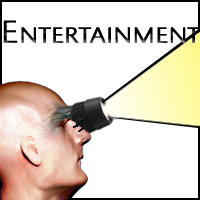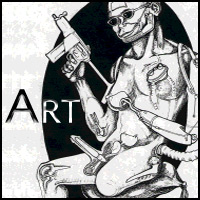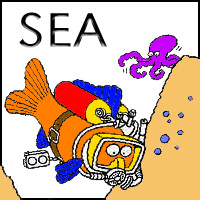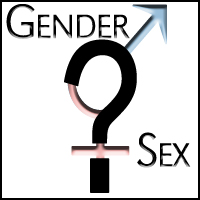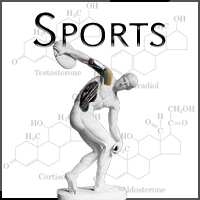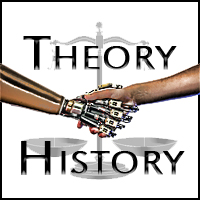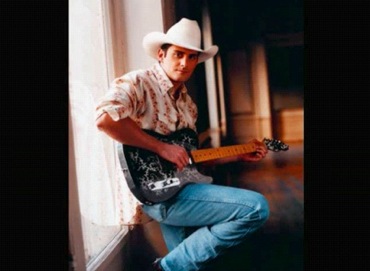
Information Over Matter: Cyborgs in CyberspaceDavid Perlmutter "We're starting a new chapter in technological history. Chapter one - machines built out of something; chapter two, machines built out of nothing. Merely enacted, temporarily embodied by an irrelevant hunk of metal, plastic and silicon called a computer." (Gelernter 1993) Mark wakes up in the morning. Stretching, he puts on the coffee and turns on his computer. The screen comes to life, the Internet connection is active; Mark checks his email, looks at his Facebook, views his music MySpace and Flickr accounts. Each account has a different moniker, a different identity.
“In the physical world there is an inherent unity to the self, for the body provides a compelling and convenient definition of identity. The norm is: one body, one identity.” (Donath 1998) Perhaps Judith Donath's concretizing quip is an adequate starting point for this article. Mark, our hero, has a small array of digital identities. Though each one could bear the same screen name, each serves a different purpose, portrays a different existence on a different network: On Facebook, Mark is “himself.” Portrayed in pictures of himself, validated with real-life friends, and academic and career-related networks. On his music MySpace, Mark is the dark and elusive “SH4DOWTRON”, a flurry of glitch-techno feedback pulses characterized by a brief text biography and ambiguous pictures. On his Flickr, Mark is “inverted_forest” (a quote from his favorite short story) a black-and-white photographer with an extensive repertoire of vintage-looking portraiture. These identities are not compounded, but rather isolated individuals which evolve independently of their progenitor. Facebook Mark, SH4DOWTRON, and inverted_forest act as extensions of Mark's memory, ears, eyes, voice, and ultimately, himself. Just as man uses a car to extend the traveling capabilities of his legs, the phone to magnify his ears and voice, so can Mark augment his physical and social attributes across the biggest information system known today. Does this make Mark a cyborg? Manfred Clynes says in interview “When homo sapiens walks he doesn't pay much attention to how he walks, it's natural. In the same way, when he is on his bicycle it feels natural to a person who knows how to ride a bike. You can call that, if you want, a simple cyborg right there.”(Gray 1995) Clynes is elaborating loosely on his view of homeostasis. The machine and the organism are not intrinsically connected, nor do they operate in complete unawareness of each other, but still they are coordinating a simple system to a desired, cybernetic result. Ted Kaiser, a self-proclaimed old school cyberpunk head, states in his short article entitled The Internet Cyborg “Éusing the Internet fully involves the creation of a new identity. The new identity is formed from the relationship between the original identity and the Internet. It is a cyborg identity, part machine, part human.” (Kaiser 1999) Kaiser seems to argue that the Internet itself becomes a cybernetic filter for human identity, and that any access at all is inviting cyborgization. To Ted Kaiser, the Internet is the bicycle which Clynes' homo sapiens can blend with so effortlessly once he/she has the know-how. The production of ‘Man,' Adam Bostic argues, has given way to the production and simulation of cyborgs. “Cyborg subjectivity stretches as far as capitalist individuals' access to the cyberspatial interface of the apparatus continuum constituted by phones, modems, PC's, cable TV, cell phones, faxes, etc., of late capitalism.” (Bostic 1998) Cyborg identity, mirroring online identity, is constructed. Donna Haraway sees the ability to construct consciousness as liberation. (Haraway 1991) Cyborgs define themselves in negative space; manifesting what they are not. This concept has its genesis in oppositional identity, a term coined by Chela Sondoval. Oppositional identity is a utility for people who do not fit into the preconceived categories of sex, race, status, physicality normally used as identifiers and infrastructures in identity construction. Haraway views this categorization as intrinsically finite and forced. Individuals do not fit into existing categories, so they begin to construct new categories for themselves, further fragmenting themselves in the search for unity. In the age we live in, virtual identities have already become transparent; macerated by criticism and popular culture. A new popular song by country star Brad Paisley titled “Online” features a protagonist admitting his faults and then colorfully elaborating the glory of idealized online identity representation. "I'm 5 foot 3 and overweight ... And I've never been to second base. But there's whole 'nother me that you need to see. Go checkout MySpace. 'Cause online I'm out in Hollywood. I'm 6 foot 5 and I look damn good. I drive a Maserati. I'm a black-belt in karate ... So much cooler online."
In the context created by this song, Brad Paisley exists somewhere between the identity of his lonely protagonist and his highly publicized and marketed image. In a way, he has de-familiarized the gap between online and “real-life” identity while simultaneously engendering a hyper-awareness toward the differentiation. Where do these identities exist? The internet, of course, the physicality of this plane is debatable but, to refer once more to Judith Donath: “The virtual world is different. It is composed of information rather than matterÉ The inhabitants of this impalpable space are also diffuse, free from the body's unifying anchor.” (Donath 1998) Indeed, it would seem that Donath sees cyberspace as another physical realm where one escapes the body and takes on a new persona. Clynes notes on his first cyborgian concepts for space travel “Éa concept of persons who can free themselves from the constraints of the environment to the extent that they wishedÉit seemed necessary to give him the bodily freedom to exist in another part of the universe without the constraints that having evolved on earth made him subject to.” (Gray 1995) Participant evolution is primarily what Manfred is talking about; the deliberate modification of the human body and brain using primarily technological means. The effect, Sherry Turkle argues in her book Life on the Screen: Identity in the Age of the Internet is that "...players can develop a way of thinking in which life is made up of many windows and RL is only one of them[.]" (Turkle 1995) Turkle suggests that the continued suspension of consensual “real-life” reality, namely in the MUD players around whom her discourse is focused, illuminates many selves within the player which previously did not exist and that none of those characters are any less real than their unified self. Once this identity fracturing is enacted, over time it becomes fluid. The author states “We do not feel compelled to rank or judge the elements of our multiplicity. We do not feel compelled to exclude what does not fit.” This hybridity and self-consciousness is what characterizes modern Internet users including Mark and his plethora of online monikers. The self is becoming more de-actualized, more de-famliarized, ever more fractured and divided. The creation of realistic Internet tools and spaces for identity blurs our actual, physical reality, “real life” in MOO/MUD circles. From a cyborgian perspective, human beings use these tools to enhance and manually modify our reality and eventually change the world around us. Maybe Ted Kaiser was right, all users, including Mark, utilize the Internet as a utility and therefore become Internet Cyborgs. Bibliography
Gelernter, David (1993) Mirror Worlds Oxford University Press, USA
Photo links
Brad_Paisely300.Photograph.http://www.nucountry.com.au/images/artists/Brad_Paisley 300.jpg.Dave'sDiary.Jan.2008.Web.
|

